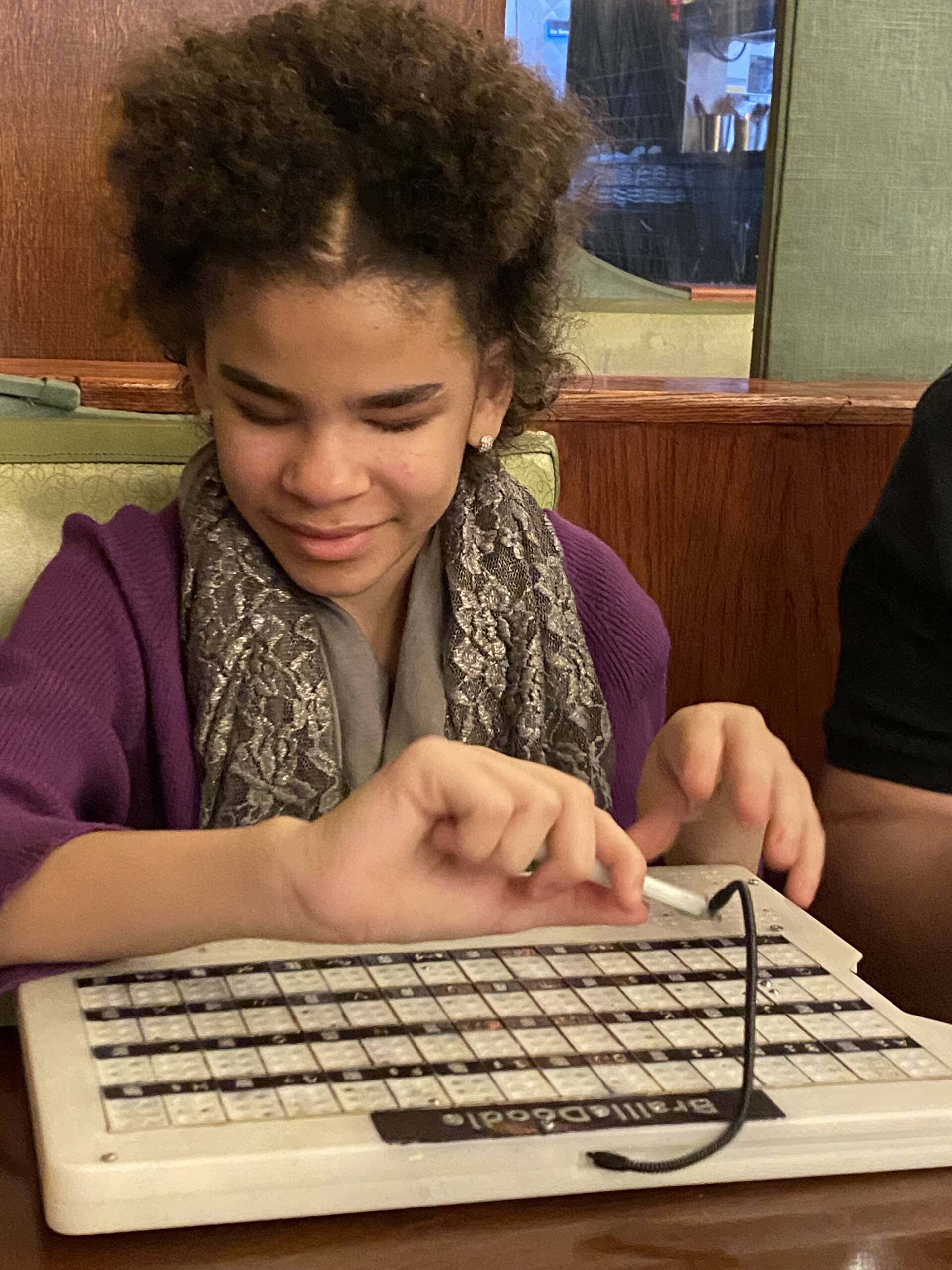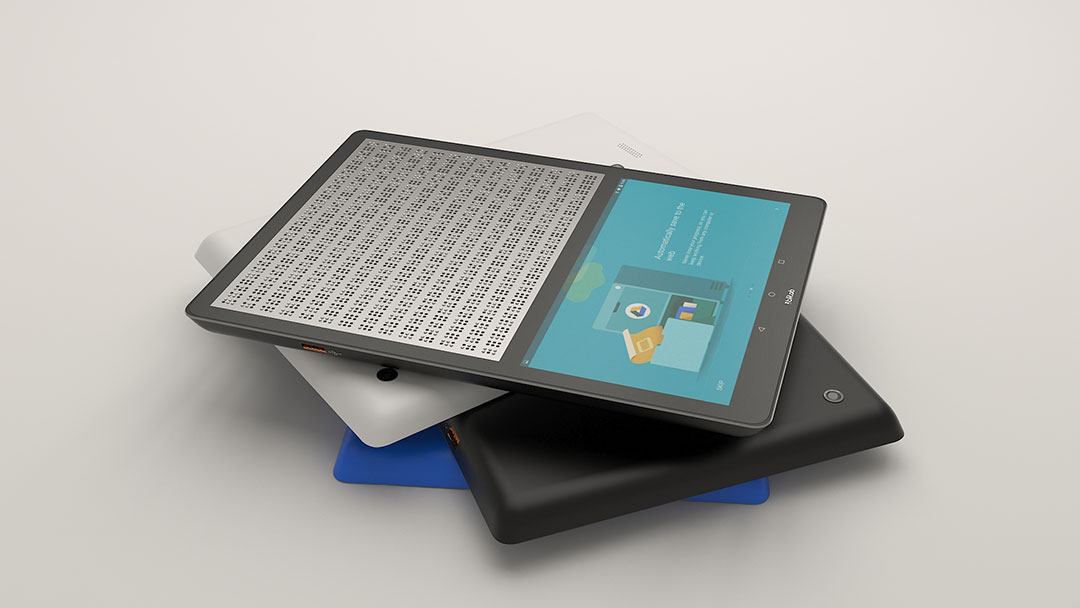Speech-to-Text Devices for Low Vision: Enhancing Accessibility
Speech-to-Text Devices for Low Vision: Enhancing Accessibility
Blog Article
Empowering Freedom With Assistive Modern Technology for the Blind
The integration of assistive modern technology right into the lives of people with aesthetic impairments stands for a significant development in promoting self-reliance and self-sufficiency. From innovative display viewers to advanced clever canes, these devices not just improve everyday navigation and interaction however also empower individuals to engage meaningfully in various elements of life. As we explore the myriad advantages and real-world applications of these innovations, it comes to be important to check out the underlying aspects that add to their effectiveness and the possibility for future advancements in this important area.
Summary of Assistive Modern Technology

The advancement of assistive modern technology is based in concepts of inclusivity and empowerment. Advancements in software, equipment, and sensory improvements give customers with alternatives tailored to their particular demands. From display visitors that transform text to speech, to responsive gadgets that convey info via touch, these tools change the means people engage with their environments.
In addition to functional applications, assistive innovation promotes better social addition and engagement in various sectors, including education and learning and work (Wearable technology for low vision). As r & d remain to develop, the potential for assistive technology to even more enhance the lives of aesthetically damaged people continues to be encouraging, paving the means for a much more fair culture where everybody can grow
Sorts Of Assistive Instruments
A selection of assistive gadgets have actually emerged to sustain people with aesthetic impairments, each created to satisfy details demands and boost everyday performance. These gadgets range from low-tech services to state-of-the-art technologies, providing diverse alternatives for individuals.
Low-tech devices consist of magnifiers and large-print products that aid in reading and writing. Braille tools, such as Braille stylus pens and slates, allow tactile reading and interaction. Orientation and wheelchair help, like white canes, help customers browse their setting safely.
On the greater end of the spectrum, digital magnification systems and screen visitors provide considerable assistance. Digital magnifiers enable customers to expand message and images on screens, while display visitors transform digital content right into synthesized speech, helping with accessibility to info on smart devices and computers.
Smart device applications likewise play a critical function, providing functions like text acknowledgment and navigating support. Wearable modern technology, such as smart glasses equipped with increased fact, is arising as a promising tool to boost situational awareness.
Benefits of Assistive Technology
The integration of assistive technology substantially boosts the high quality of life for people with visual disabilities. These modern technologies equip users by promoting independence, enabling them to navigate their environments a lot more efficiently and execute day-to-day tasks with higher convenience. Display readers and zoom software permit individuals to access electronic info, fostering educational and expert opportunities that may have formerly been out of reach.
In addition, assistive tools such as smart canes and general practitioners applications give real-time navigating aid, enhancing wheelchair and safety and security. This increased autonomy not just improves self-esteem but also motivates social involvement, enabling his explanation customers to take part even more totally in their areas.
Assistive innovation additionally assists in communication, helping users get in touch with others with voice recognition and text-to-speech applications. This ability is essential for preserving relationships and accessing essential information.
Furthermore, the customization alternatives offered with lots of assistive modern technologies guarantee that individuals can customize devices to their particular requirements, additionally improving use and efficiency. Generally, the advantages of assistive technology for individuals with aesthetic problems are extensive, promoting a much more inclusive society where everyone can pursue their goals and objectives.
Study and Success Stories
Highlighting the transformative influence of assistive technology, numerous case studies highlight how people with aesthetic impairments have actually efficiently incorporated these devices right into their day-to-days live. One engaging instance entails an university student who made use of display reading software application to browse online sources and academic products properly. This innovation not just promoted her education and learning but likewise enhanced her confidence in joining conversations and team tasks.
Another study includes a specialist that employs a mobile phone application created for navigation and item recognition. By utilizing this app, he has actually reclaimed freedom in both his personal and workplace, enabling him to commute individually and involve with colleagues more efficiently.
Furthermore, a senior citizen shared her experience with braille e-readers, which allowed her to access a large variety of literary works and remain connected with her neighborhood via book clubs.
These success tales emphasize the important duty of assistive technology in cultivating independence, boosting lifestyle, and promoting social integration for individuals with visual disabilities (Wearable technology for low useful link vision). By welcoming these ingenious tools, users can overcome challenges and confiscate opportunities that add to their individual and specialist satisfaction

Future Trends in Assistive Technology
Advancement in assistive technology is poised to redefine the landscape of assistance for individuals with visual impairments. Emerging fads stress the assimilation of expert system (AI) and artificial intelligence, which boost the performance of tools that assist with navigation and details availability. AI-driven applications are now qualified of interpreting visual data in real-time, making it possible for users to engage with their atmosphere much more independently.
Moreover, the advancement of wearable innovation is advancing rapidly. Smart glasses furnished with increased fact (AR) can offer audio summaries of surroundings, transforming exactly how customers connect with public spaces. These gadgets browse around this web-site not just promote autonomy however additionally foster social incorporation.
Additionally, the Net of Things (IoT) is making homes smarter, enabling for smooth connectivity in between everyday devices and assistive devices. This connectivity equips users by enabling automated actions and voice-activated controls customized to individual demands.
Final Thought
In conclusion, assistive innovation plays a pivotal function in equipping people with aesthetic problems by enhancing their self-reliance and interaction with their environments. The diverse series of gadgets and applications readily available not only facilitates navigation and interaction yet likewise promotes social assimilation and possibilities for individual and professional growth. As improvements proceed in this area, the potential for boosting the quality of life for those with visual impairments will increase, cultivating greater freedom and empowerment.

Report this page